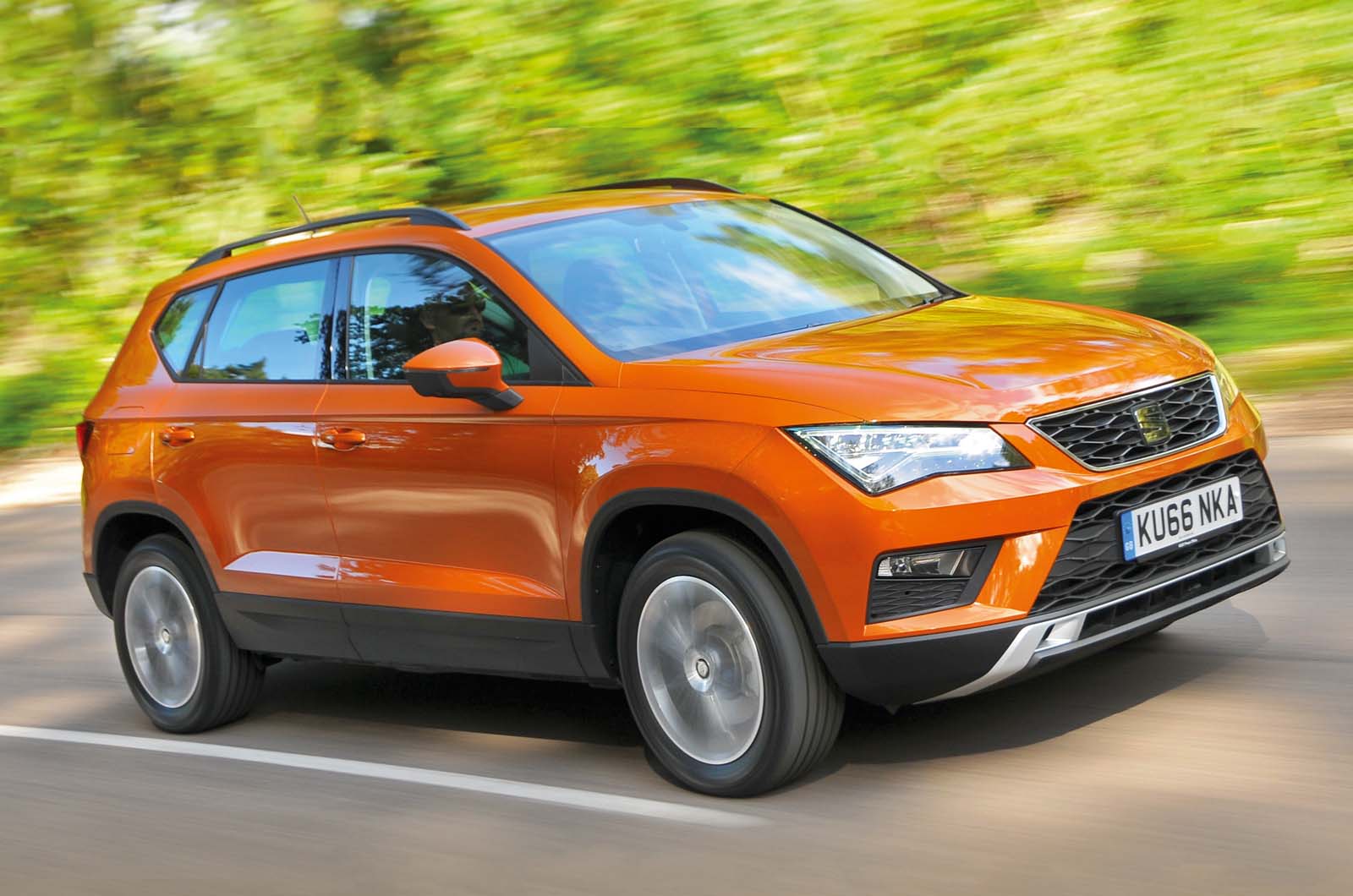It was to the Ateca’s good fortune that the previous-generation of Leon had always been considered something of a looker since its launch in 2013 – because, rather conspicuously, that car was the design inspiration here.
A ‘big brother’ was the description apparently favoured in Martorell, and that was largely the way it transpired in the metal, with the crossover sporting a similar quota of sharp lines and high shoulder creases.
There was a sibling relationship with the Tiguan, too, that car being the first SUV outing for the omnipresent MQB platform underneath both it and the Ateca, but this association was kept firmly under wraps.
For one, the Ateca was noticeably shorter than the larger-scale VW, and for another, it was decidedly more sporty-looking.
This, of course, was no accident. Being a tiny bit sportier was Seat’s long-standing raison d’être, and the firm said the identity extended to the slightly different way its crossover had been tuned. In hardware terms, the Ateca adopted the established MQB characteristics.
There was a choice of two petrol engines (the three-cylinder 1.0 and four-cylinder 1.4 TSIs) and two diesel lumps (the 1.6 TDI tested and the 2.0 TDI, available in both 148bhp and 187bhp configurations).
Most drove the front wheels exclusively, although both the larger oil-burners came with the option of a Haldex clutch-based four-wheel-drive system, with those models also benefiting from the more sophisticated multi-link rear suspension already tested in the Tiguan.
Without a driven rear axle, all other Atecas made do with a cheaper torsion beam at the back.
Trimming niceties from the bottom line did at least tend to help with a car’s kerb weight. The lightest Tiguan clocked in at 1490kg; Seat claimed 1280kg for the three-pot model.
All versions at the time came with a six-speed manual gearbox as standard, save for the 2.0-litre diesel, which got a seven-speed DSG dual-clutch automatic, either as an option or standard if you opted for the higher-output version.
And except for the entry-level model, all Atecas received Seat’s Drive Profile dial, which (as the suspension was passive) was generally limited to tweaking the throttle and electric steering feel – although in the all-wheel-drive versions, it added Snow and Off-road modes.

